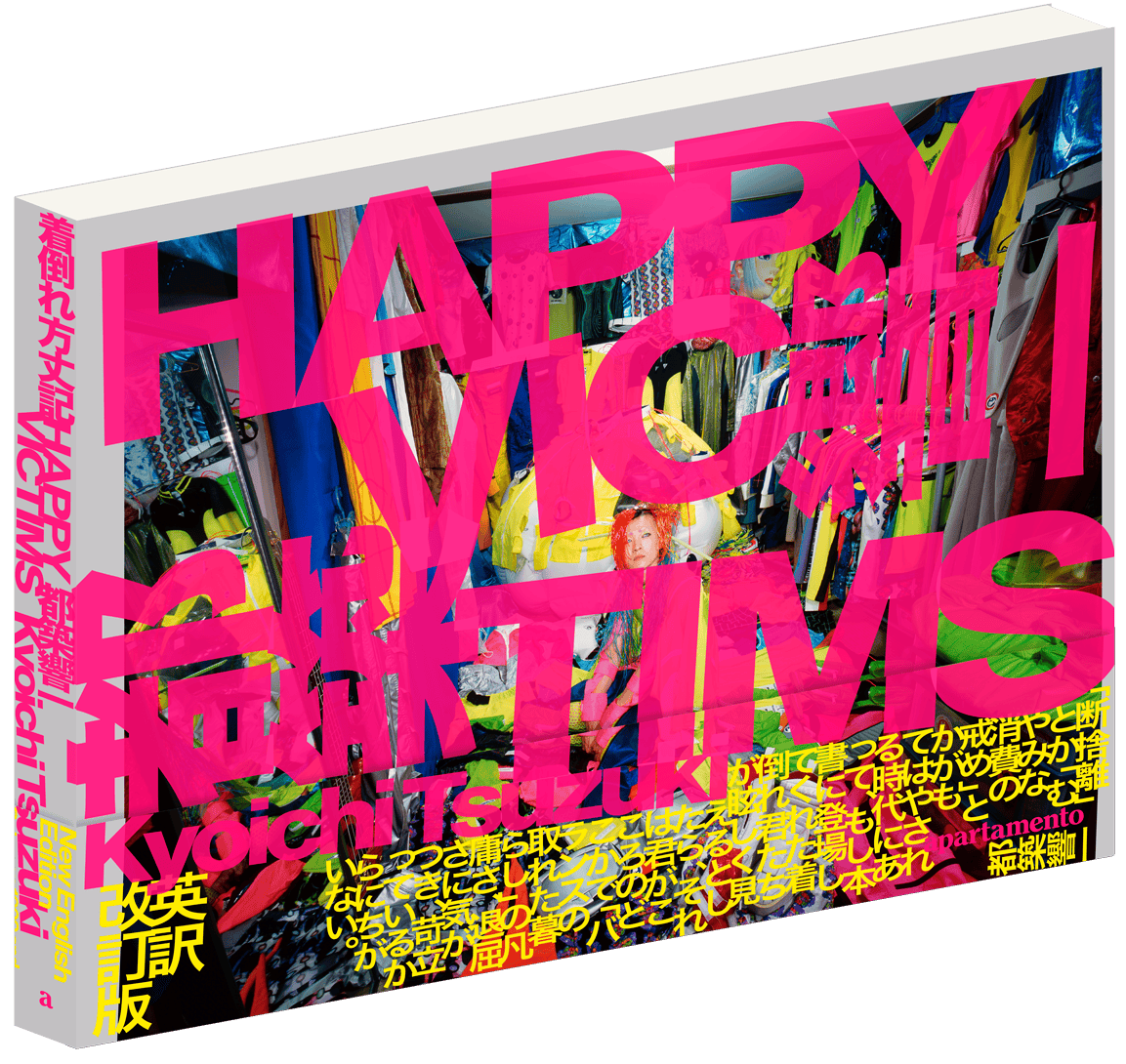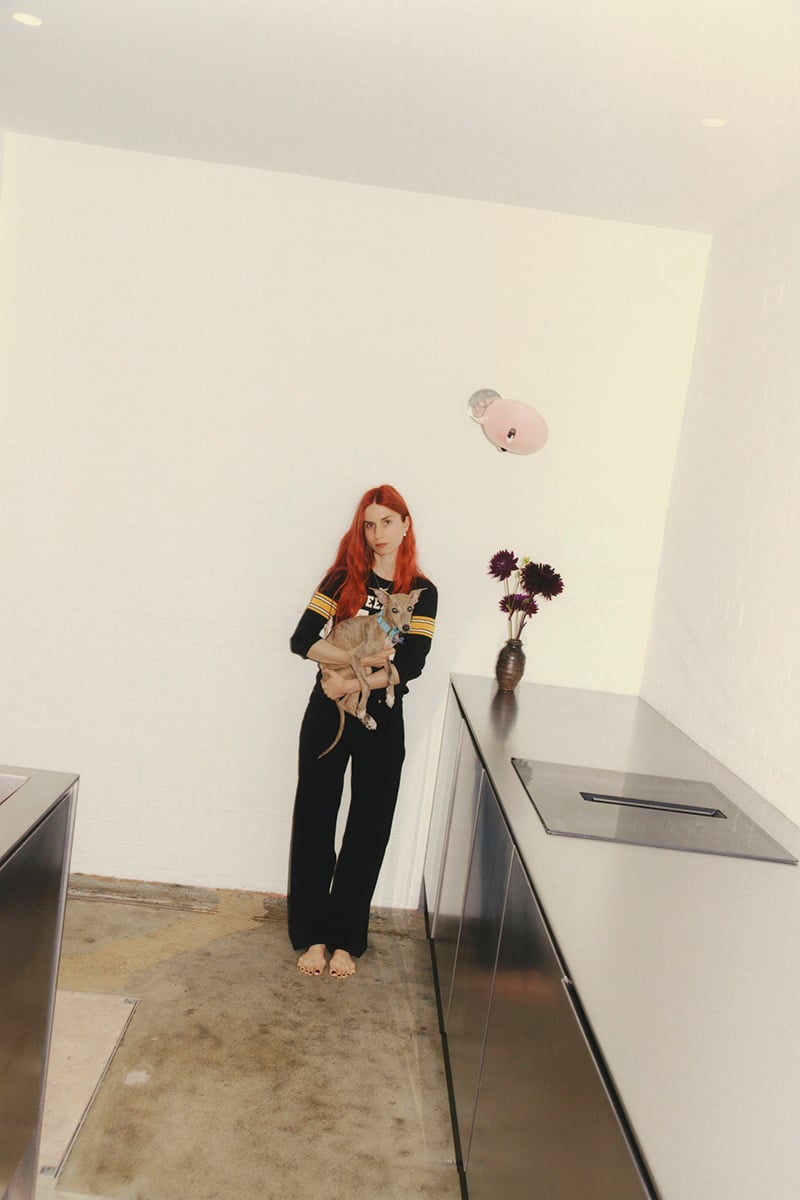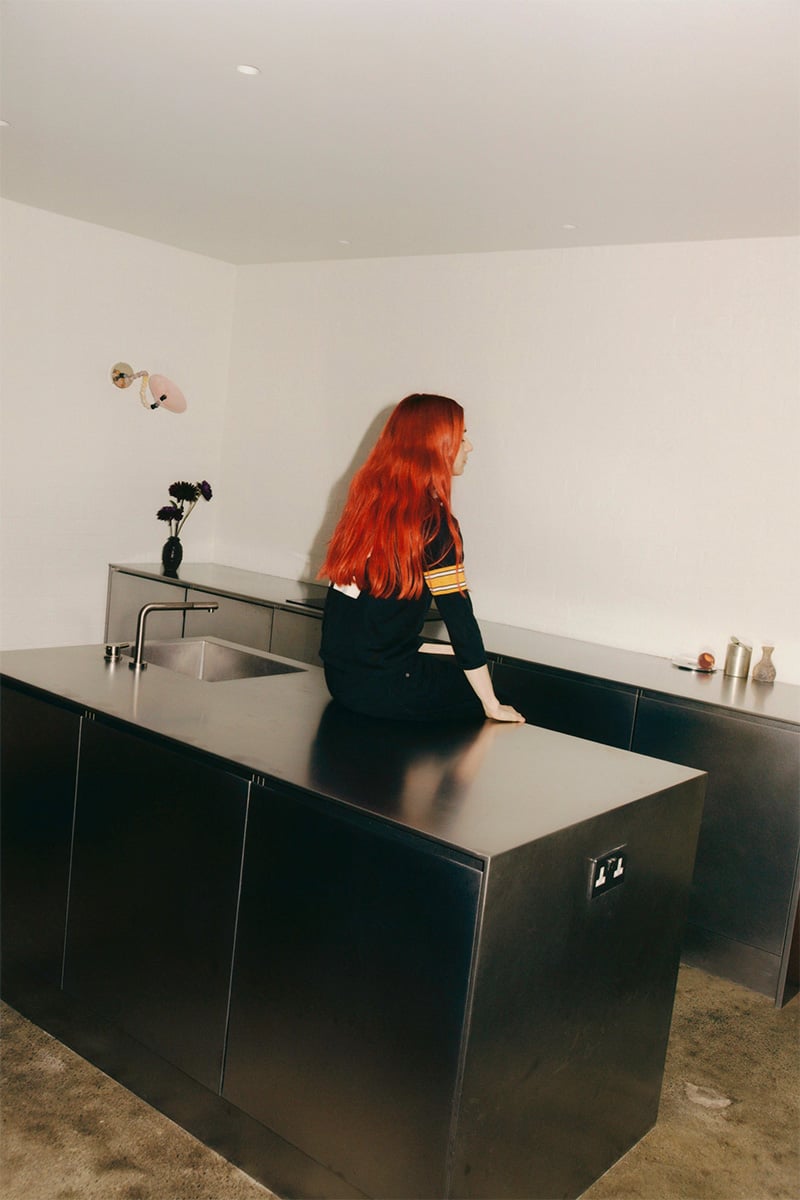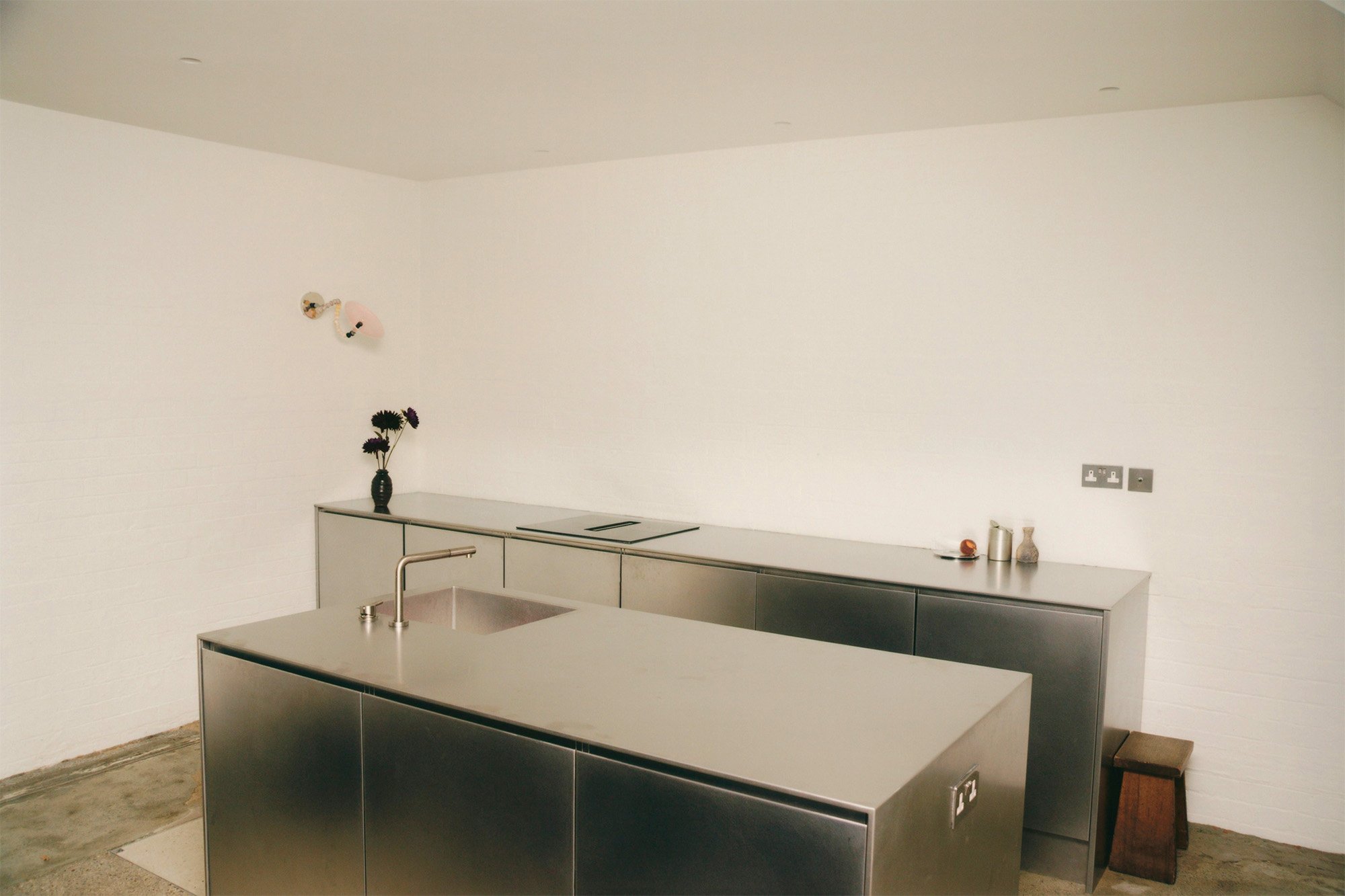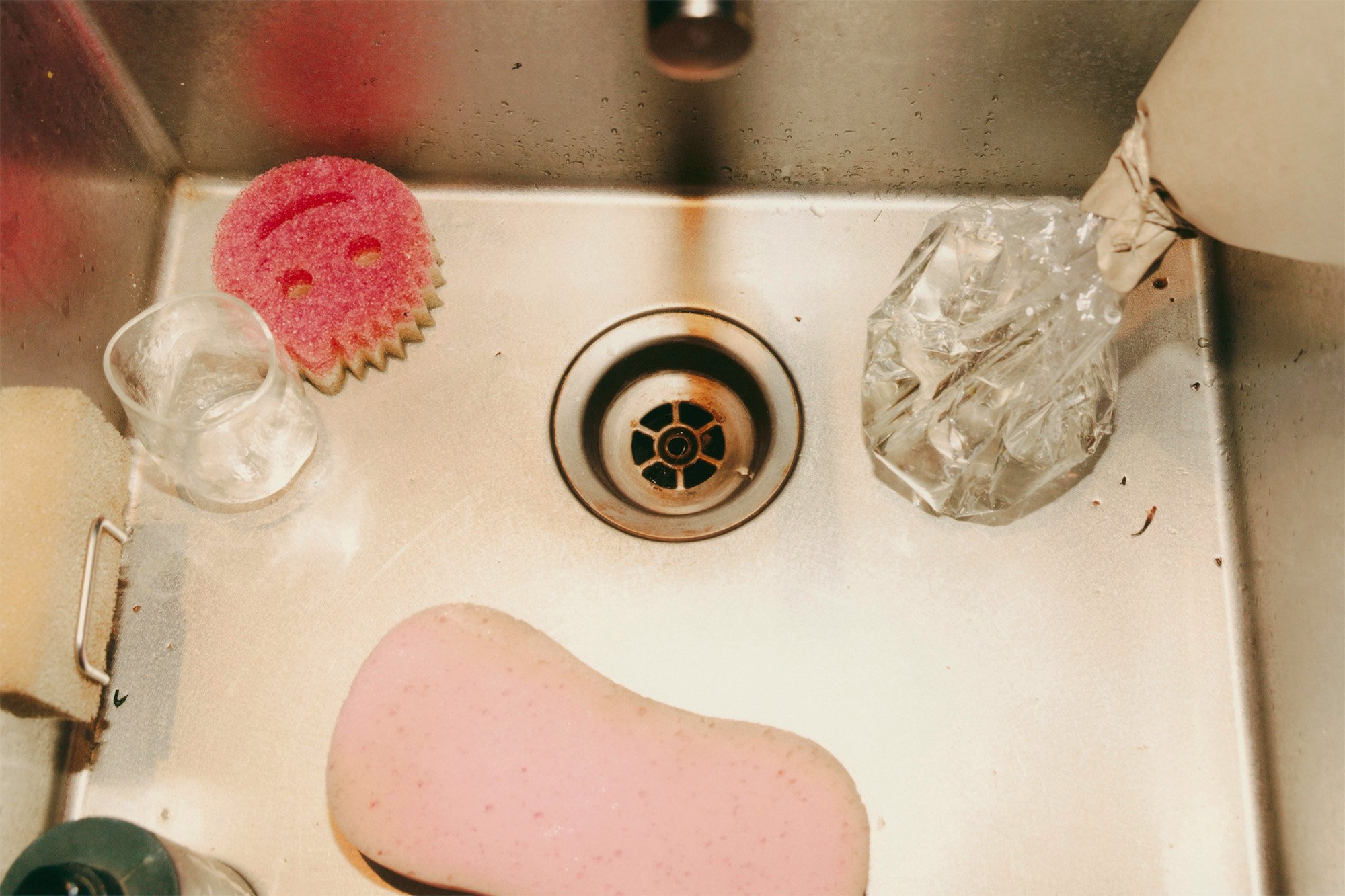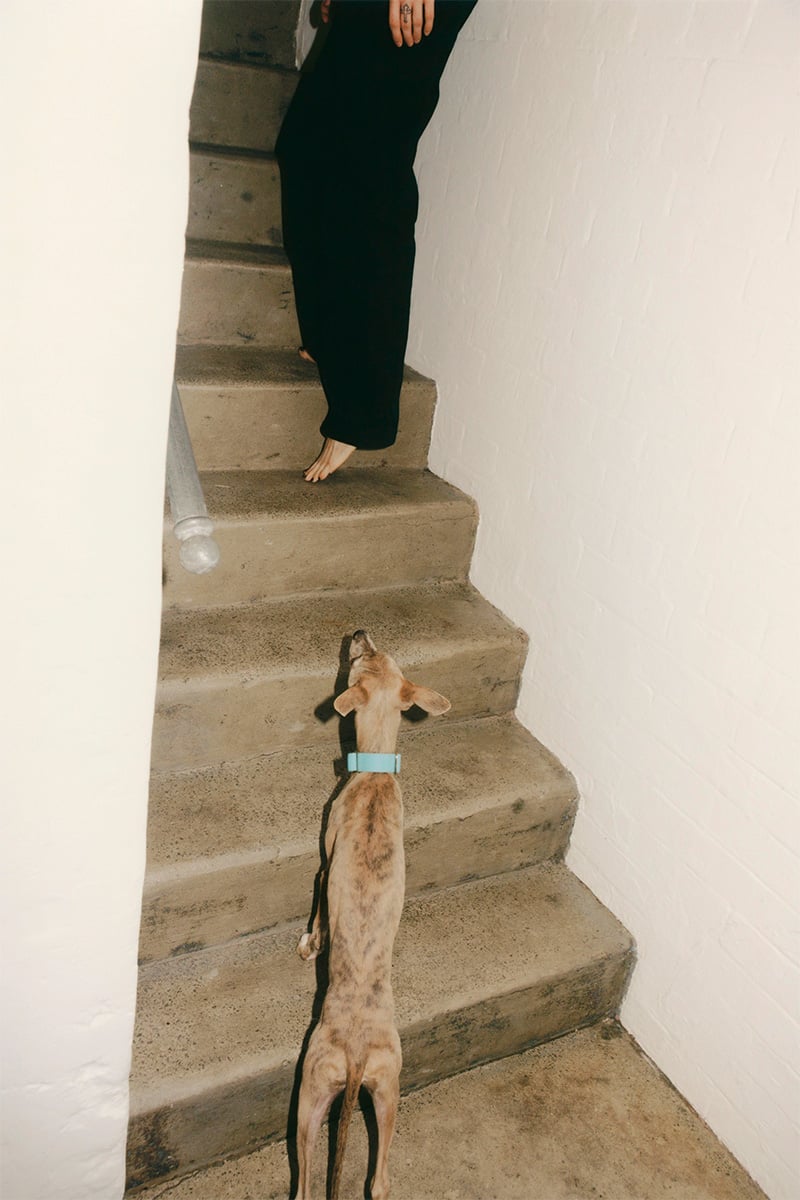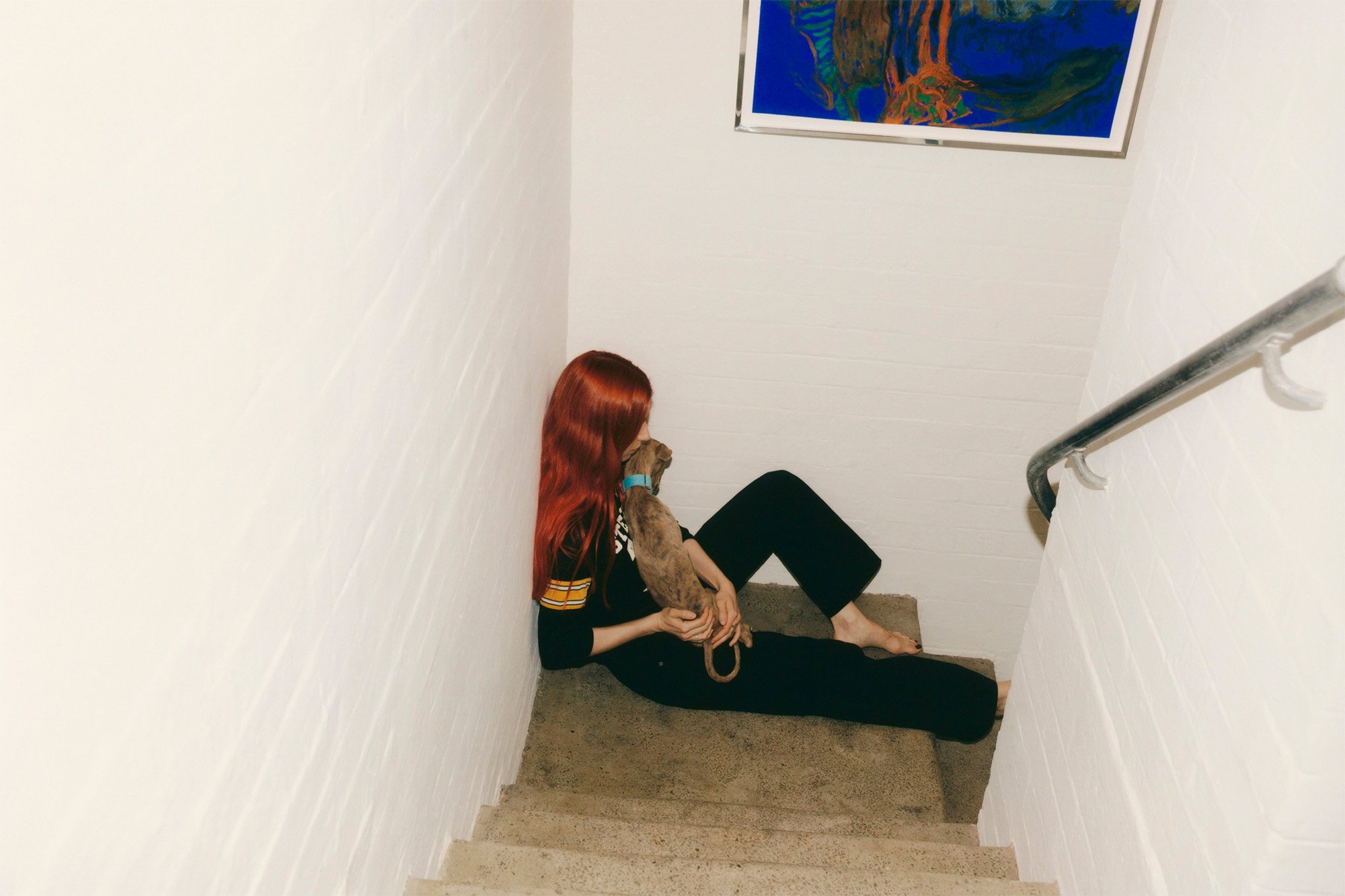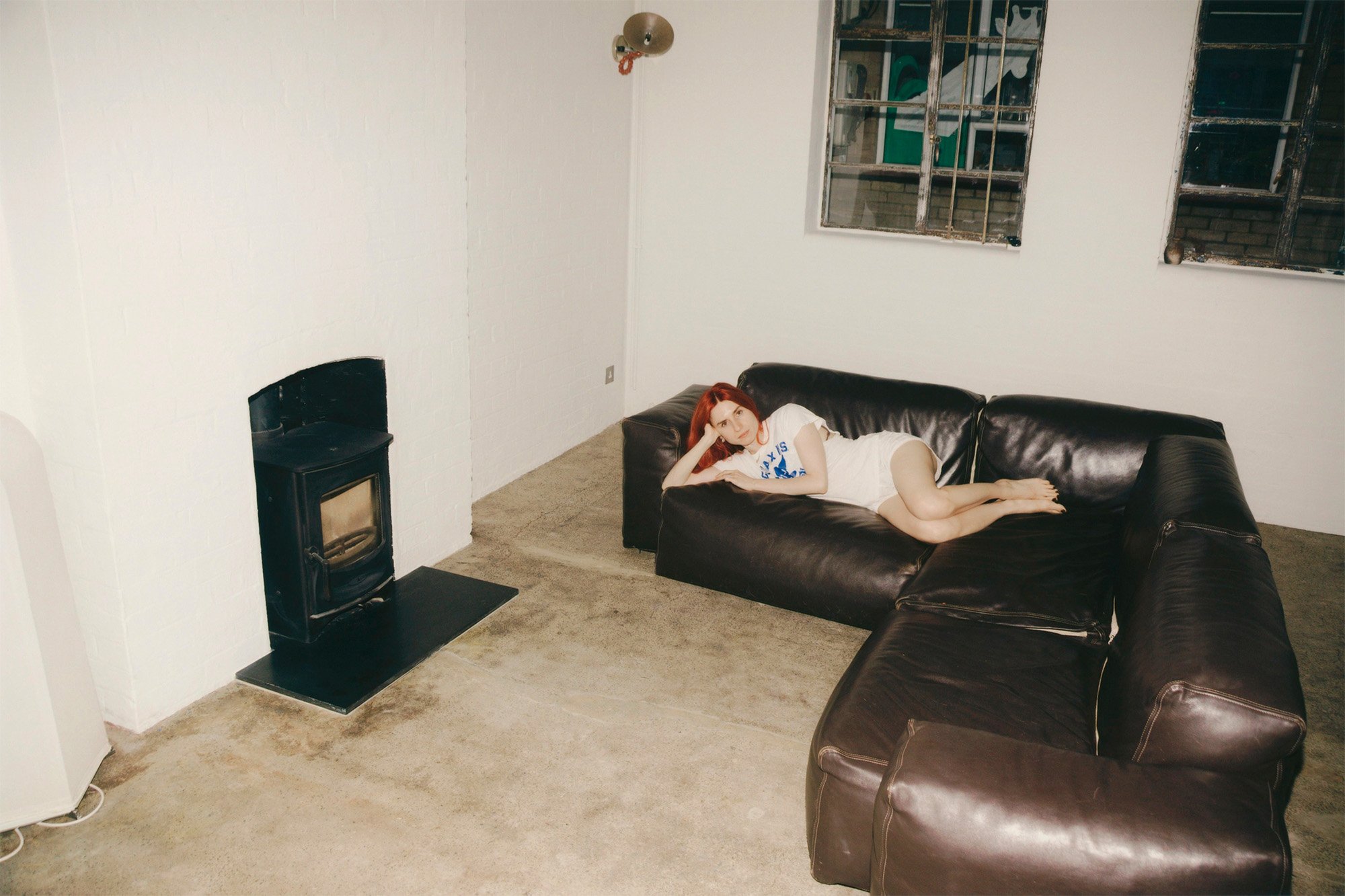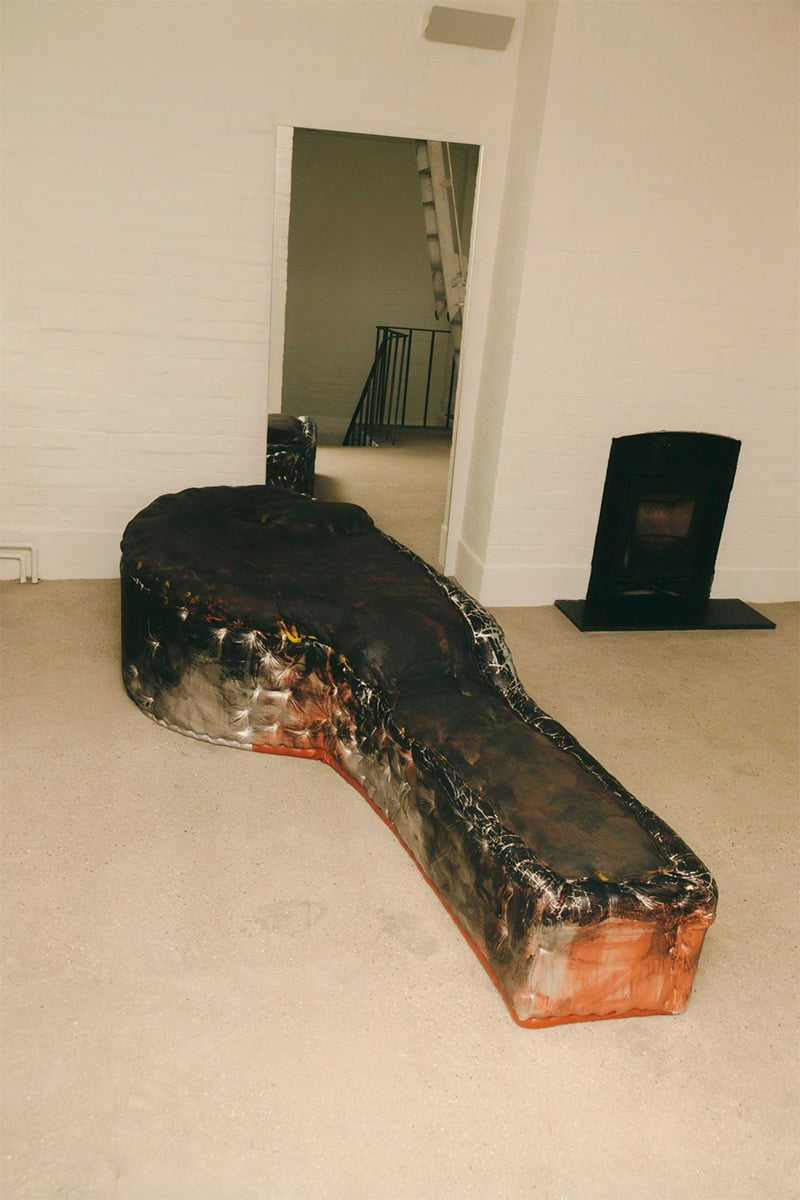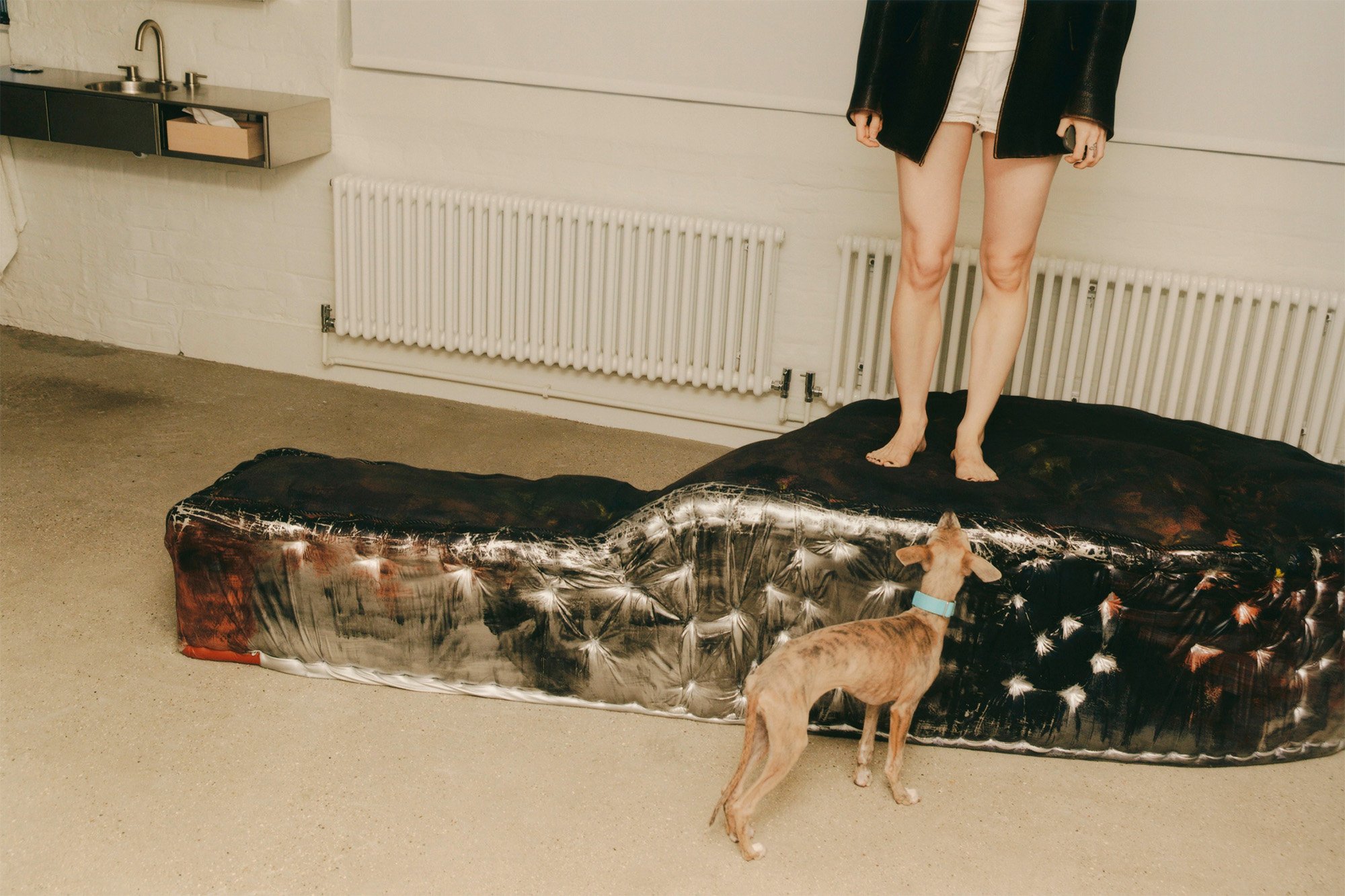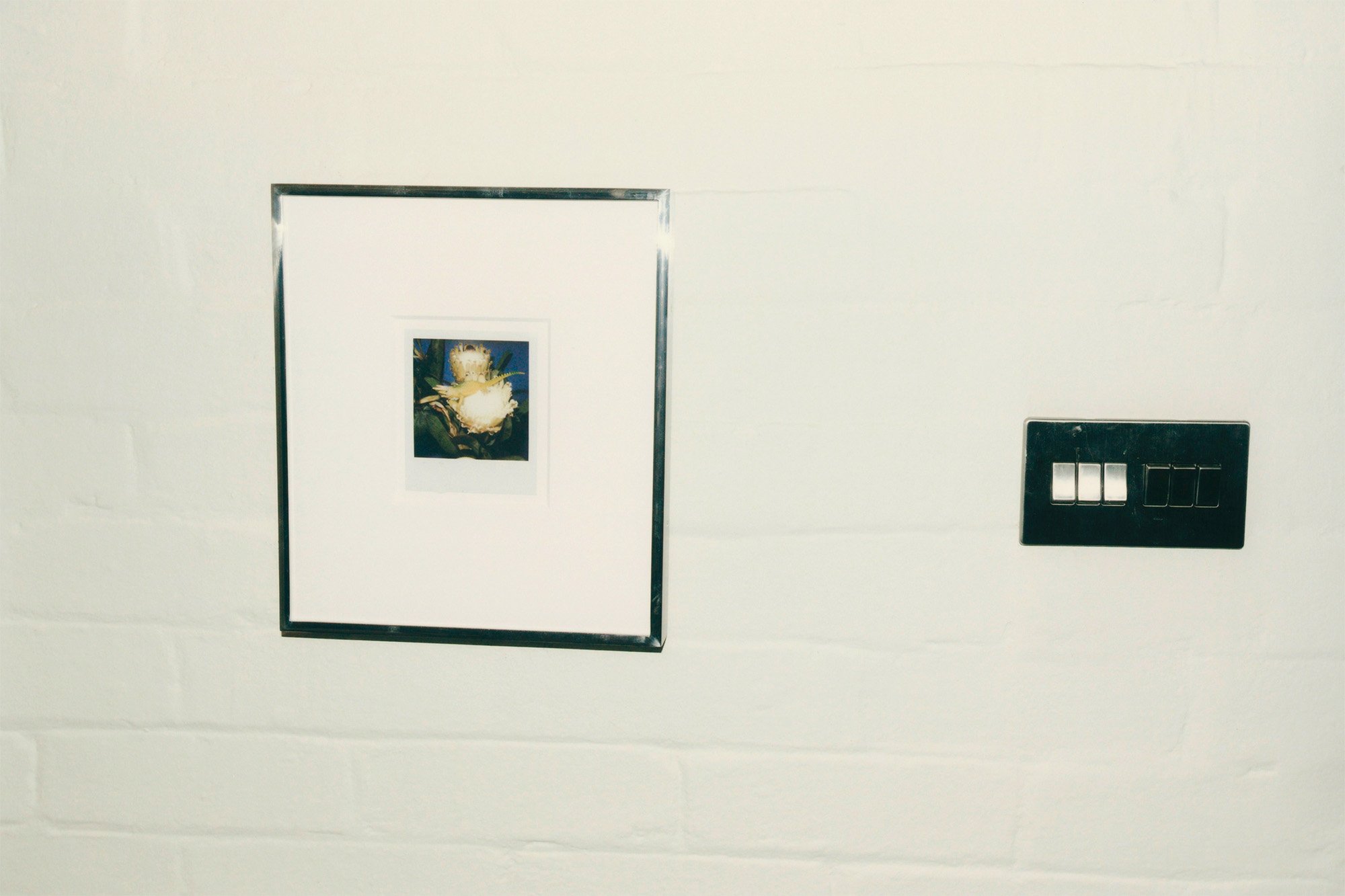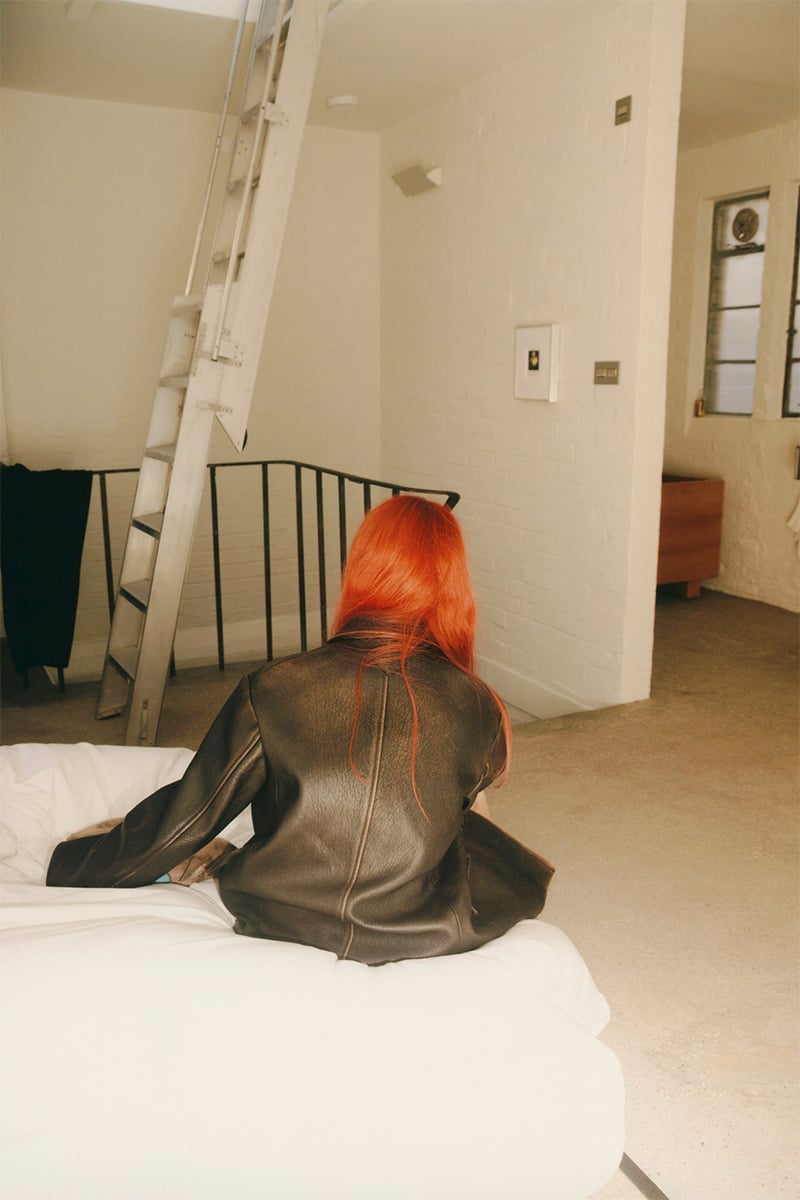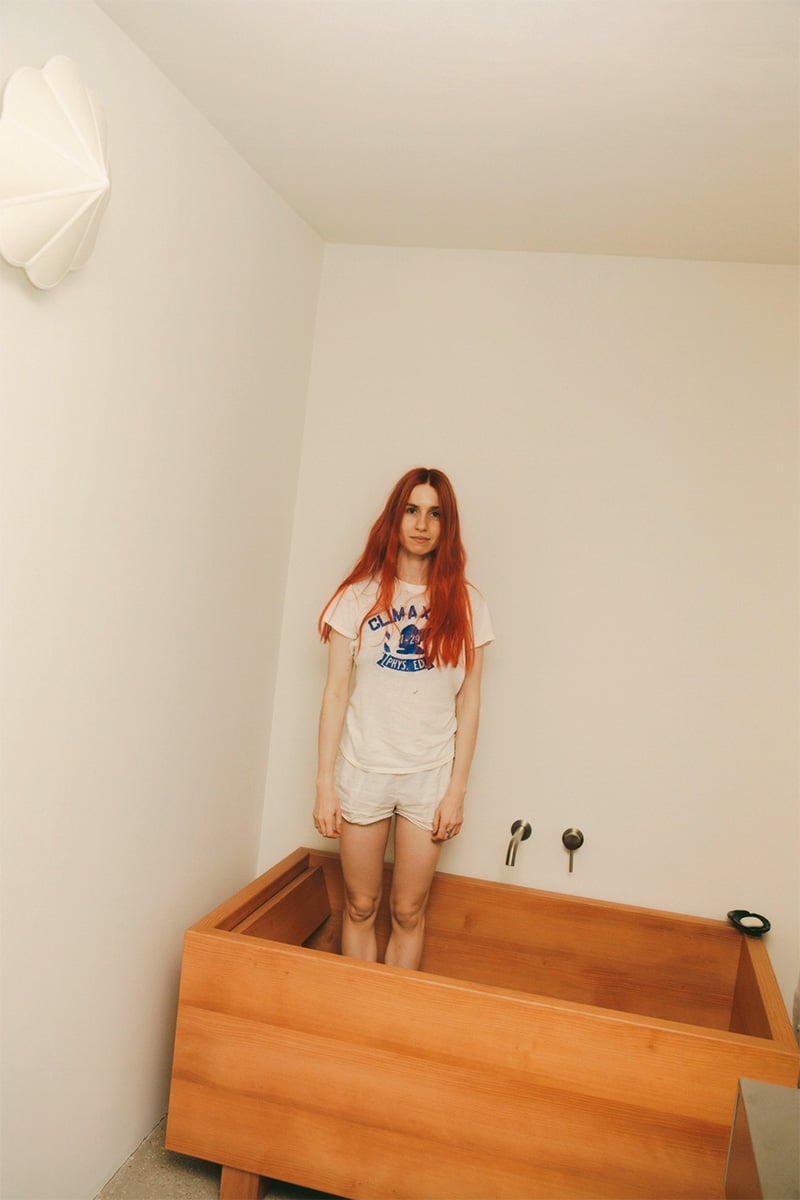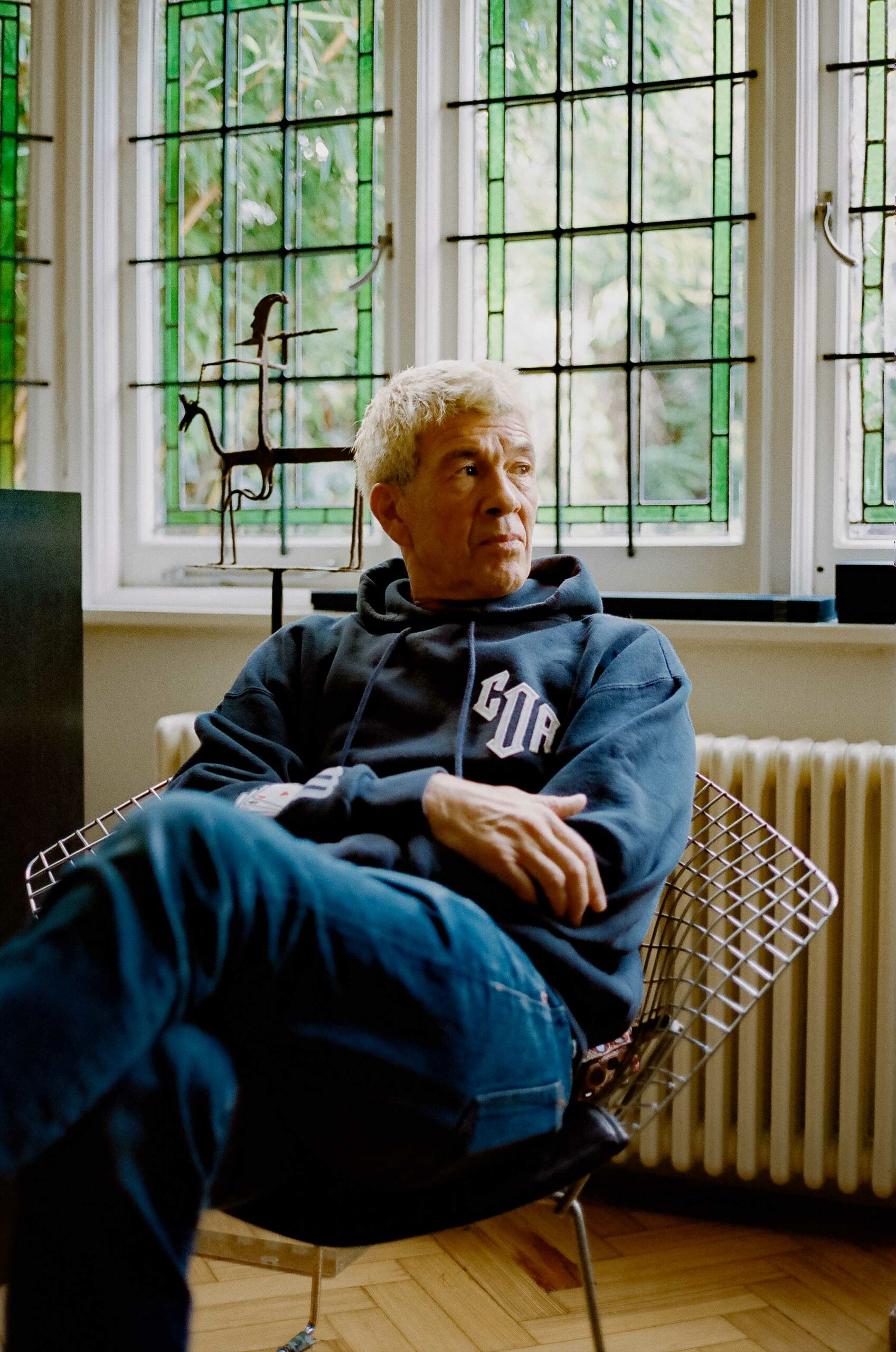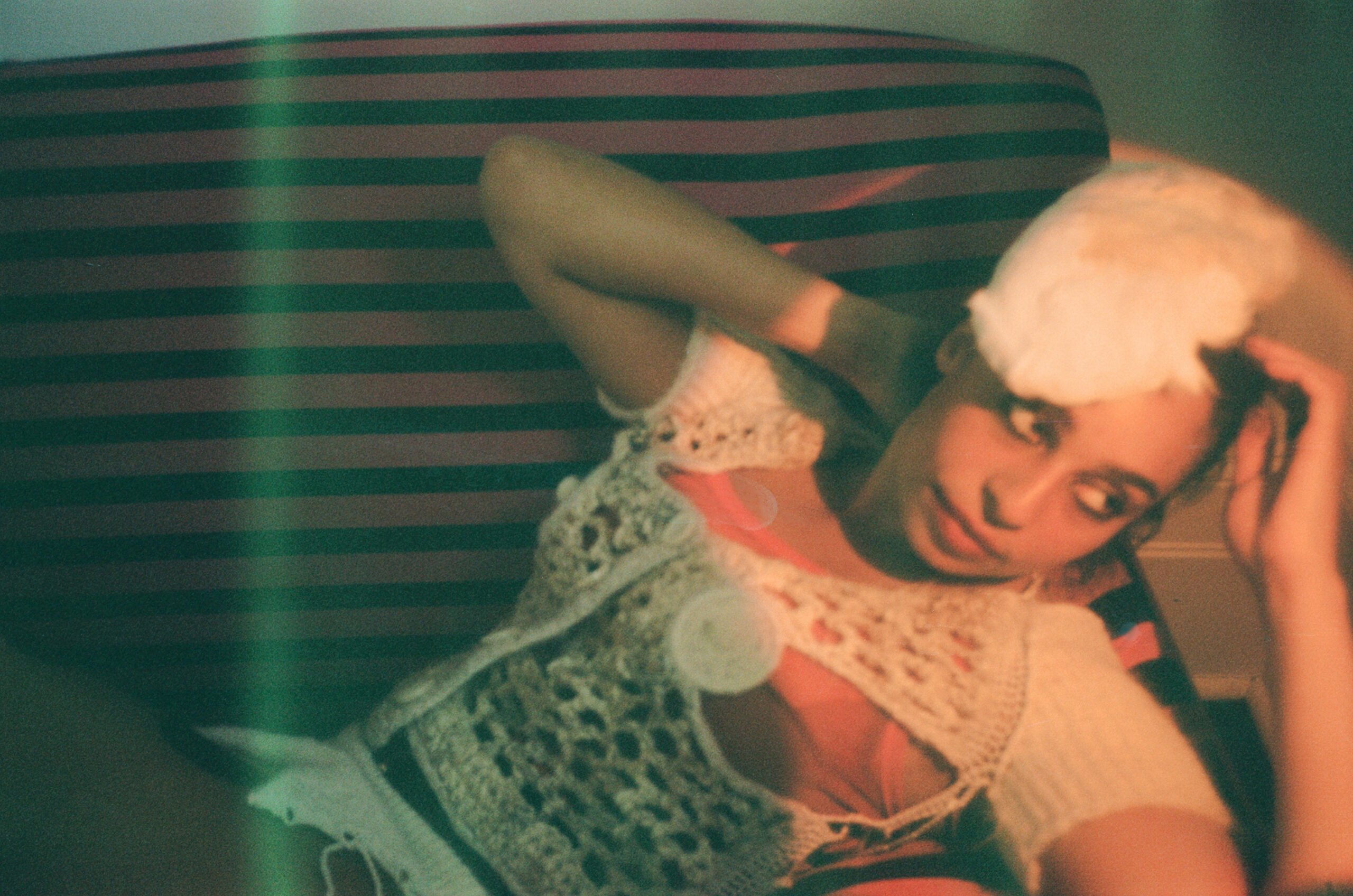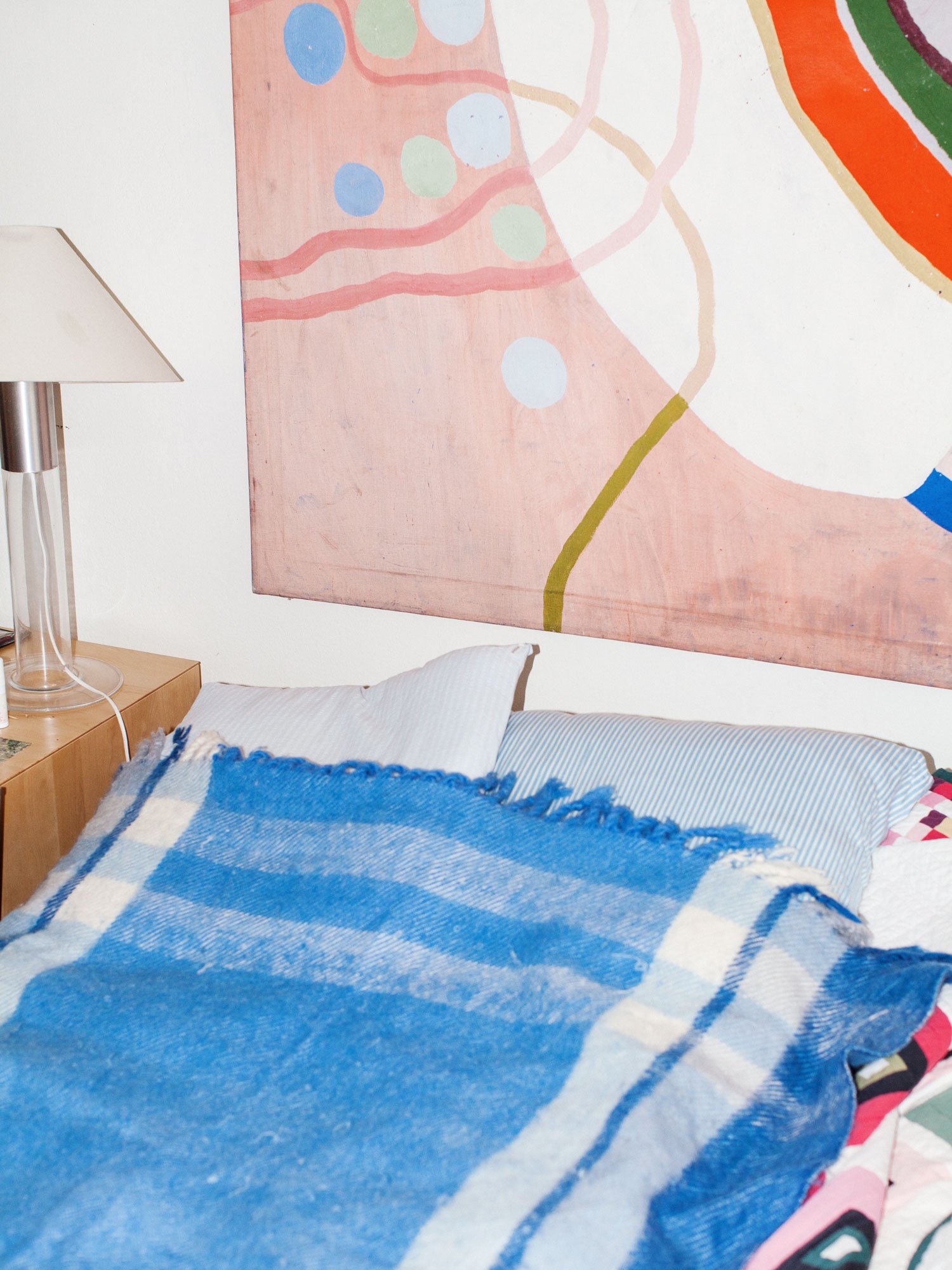London: When I think of Isabella Burley, a few things come to mind. Her mermaid-like red hair, of course (though she’ll always be a platinum blonde to me, that being the shade I first knew her by). The way she likes to point at the things she feels a connection to—an early Cindy Sherman self-portrait, a latex fetish zine, really good matcha—and say, in mild awe, ‘Isn’t it so insane?’ I also think of her as a fount of good advice, an excellent sounding board. There’s something energy-giving about speaking with Isabella, because she seems to have so much of it. The youngest ever editor in chief of Dazed when she was appointed in 2015 aged 24, and later a senior creative at both Helmut Lang and Acne Studios, she is as much a champion of ‘doing it’ as her usual choice of sneaker brand would suggest.
Her most personal undertaking yet has been creating Climax, her own brand and bookstore with bricks-and-mortar spaces in both London and New York. Founded in 2020, the distributor and sometimes-publisher is home to secondhand and hard-to-find books whose authors have garnered cult status in varying degrees—think Sofia Coppola, Kathy Acker, Hiromix, Cookie Mueller, and Martine Syms, among others—as well as wearables like Pepto-Bismol pink hoodies, underwear, and plushie keychains.
As her whippet, Bambi, padded around us at her home in London this September, I realised that I actually first met Isabella 10 years ago this month, when I joined her new team at Dazed as an editor. The time we worked together making magazines in the second half of the 2010s seems almost quaint now, a moment of relative freedom when political and commercial restraints did not yet exert such a strong shadow over the work. For Isabella’s own part, an early job at Dover Street Market London as a teenager feels like one of the earliest threads—of community, identification, and radical creativity—that extends all the way to her work with Climax today. Maybe it makes sense that Isabella, having witnessed so many large-scale industry shifts from such a young age, now finds her most meaningful home in traditional printed matter. Like the best editors, she’s a true book worm: always digging deeper.
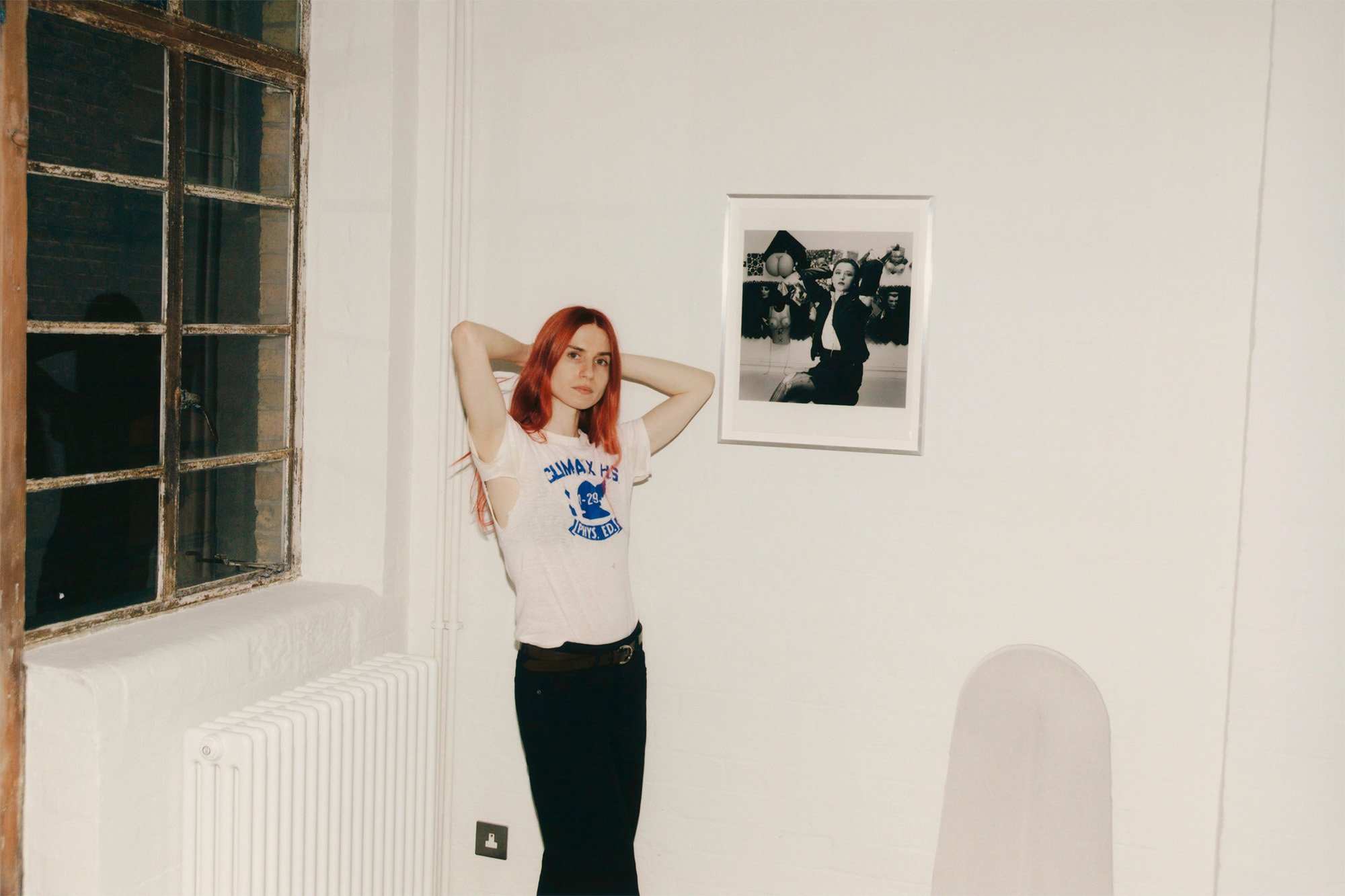
A conversation with Isabella Burley
I wanted to start with one of my first memories of working with you. We’d be at our desks in the former Dazed office on Old Street, and you were always receiving packages. Obviously, there was the classic industry gifting of nice things. But also, there’d be so much post from eBay: erotic playing cards or a dominatrix zine from a random address in Oklahoma. I remember thinking, oh, this person’s really interesting. Where did this collecting impulse begin?
I completely blocked out that I would get that kind of thing sent to the office. I ended up using a lot of that stuff when I launched Climax. I loved collecting copies of Madame in a World of Fantasy or Gum, which is Germany’s oldest fetish magazine. I’d see them, think they were cool, and then just want to get more and more. But in terms of the interest in books, there were always so many in my house growing up. My dad is a really insane reader. Still, he reads one or two books a week—novels, not erotica…
Yes!
And then I have really strong memories of being 14 or 15 and getting on the 176 bus from Forest Hill to Charing Cross Road to sit in Borders with a Starbucks. I don’t know what I ordered, because I wouldn’t have been drinking coffee yet, but it was a whole thing. I remember spending so much time going through all of the magazines there, but I would rarely buy them. Then when I was doing my A-levels, my form classroom happened to be the art room, so I would spend a lot of time there. The art teacher was so relaxed with us. She had so many books, and I started photocopying pages from these books. Whenever I go back to my mum and dad’s house, there are all these A3 clear plastic folders with scans from Louise Bourgeois, Tracey Emin, or Roni Horn books and catalogues. I think maybe the photocopying was the beginning of the collecting impulse. It was almost like making a magazine.
I think about being a teenager now, and there are these platforms where you can access that cultural archive—places like Climax or Idea, where you can gain insight into this world of photo books. When I started at Dazed, the fashion and photography I was into was really based on found images from the internet and magazines. The idea of engaging with a photographer or artist’s work through books was new to me. Then in the Dazed environment, you would commission these artist projects, examining a usually unknown individual’s work almost catalogue-style, in the pages of the magazine. It introduced me to that world.
Yes, and they were all really photo book-based. Like when we emailed Adrienne Salinger in 2015 because I had found a copy of In My Room: Teenagers in Their Bedrooms. We got all these archival pictures that had never been seen before, taken a decade before the photos in the book. They’d just been sitting in a box in her attic for 30 years. It was amazing.
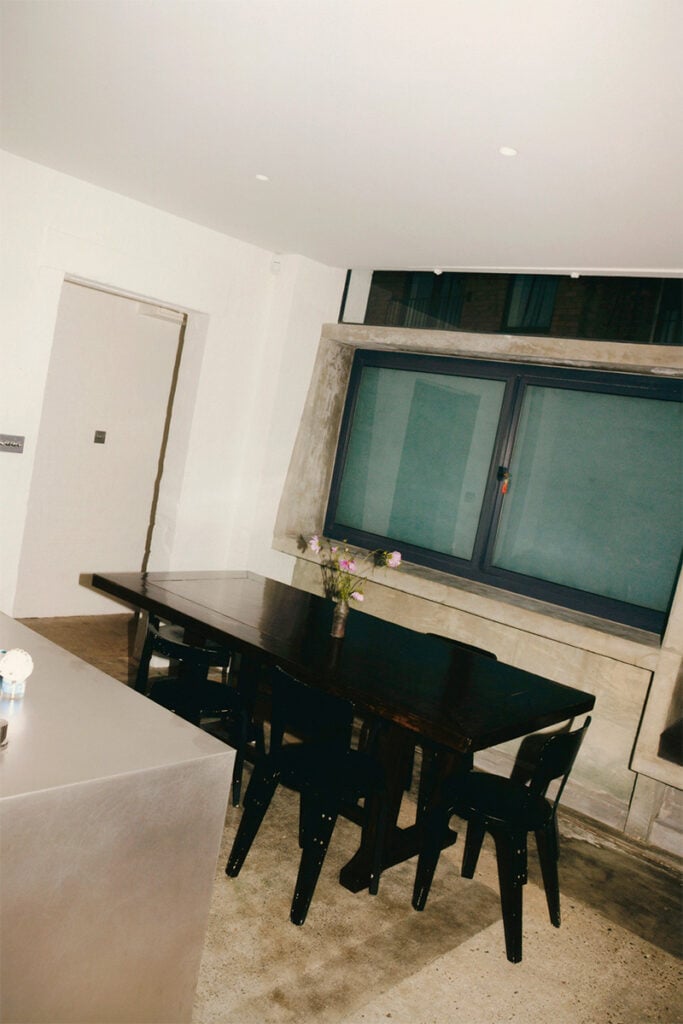
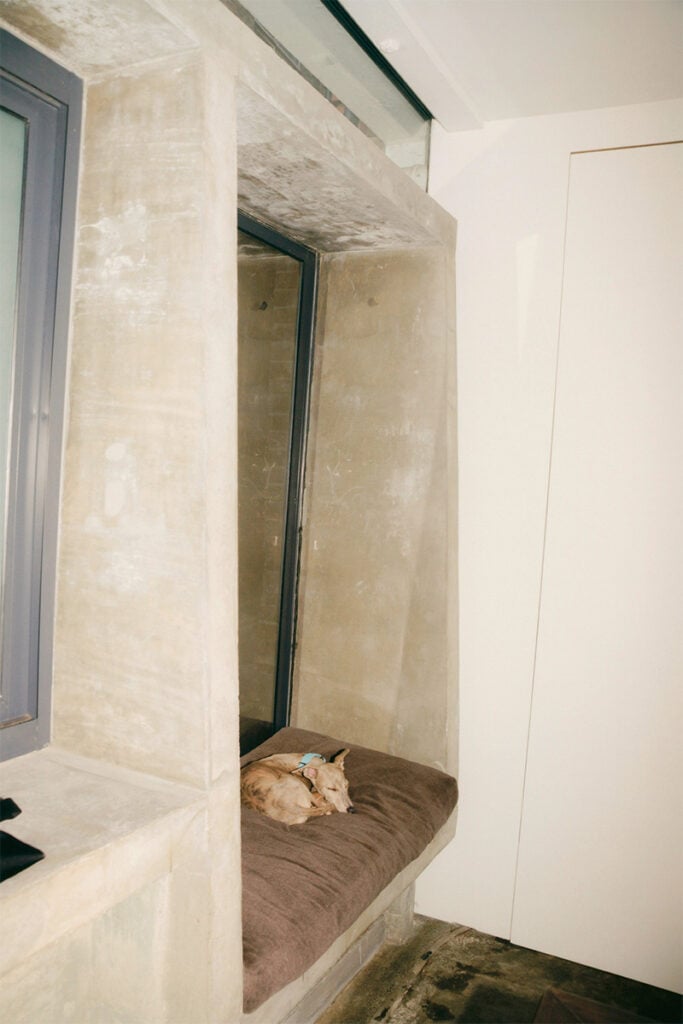
That was actually the first print piece you ever commissioned me to write for. Well, technically, I believe there was some kind of MAC lipstick advertorial first. But I was recently desperately trying to find the transcript for the Teenagers in Their Bedrooms project, because I spoke to Adrienne Salinger for literally four hours for what ended up being a paragraph in the magazine.
That kind of thing was the best part of our jobs.
Have you seen that D.A.P. reissued it?
Yes, we’ve ordered some. And there’s the Happy Victims reissue too, which I wrote the introduction for. It’s amazing that these books that went out of print and now cost 200 or 300 pounds can be made more accessible. Especially when it’s a series that has come to define culture but that didn’t get the recognition it deserved at the time.
But if you’ve scrimped and saved for, say, the original Japanese edition of The Virgin Suicides by Corinne Day like me—there’s also a moment of, ‘Oh damn!’ when Mack reissues it.
I think what interests me so much about printed material and books is intention—and context. What kind of wider context do they sit in? The reproduction of the images in Mack’s The Virgin Suicides is insane—those images look like they were shot yesterday. But something like the Japanese The Virgin Suicides book, the black with the bright pink obi, makes me ask questions like: Why was that decision made? Why that paper? These different contexts interest me.
Like with the Adrienne Salinger book. At the time, it really was this educational book, more like what you’d find in a social studies library. It just happened to find its home and an appreciation within fashion later.
Exactly. It’s a reflection of society at that time, and the interviews are one of the most important parts of it. They were revealing and in-depth at a time when teenagers hadn’t yet been given a voice to talk about their personal space. It was very pioneering.
Between Climax, Acne, and your other projects, there’s this obvious curatorial element. But I also wanted to ask you about the meaning of being an editor. There’s a specificity to an editor’s mindset that I think still holds across your work, even when it’s not strictly editorial. How does being moulded in that tradition still shape the work you do?
Not to sound like I’m 60 years old and reflecting on my life, but I have been thinking about this—maybe because I’m turning 35 in two weeks, which feels strange. Someone asked me the other day, do you identify as an editor now? While I haven’t technically edited anything in five years, I do think the mindset stays with you. When I started, I didn’t even know what an editor was. You were the same, I’m sure. If you wanted to work in fashion, it felt like you had to be a model or a designer. And sadly, neither of those worked out for me! Also, I never really identified as a writer. Whilst I can write, we both know how painful that is for me—you’ve edited me. But moving into the role of an editor, I felt so comfortable. It felt curatorial, but it was also about being observant—watching things, being attuned to what’s happening culturally, and making these new moments or conversations happen. It’s about storytelling, and it’s about taste.
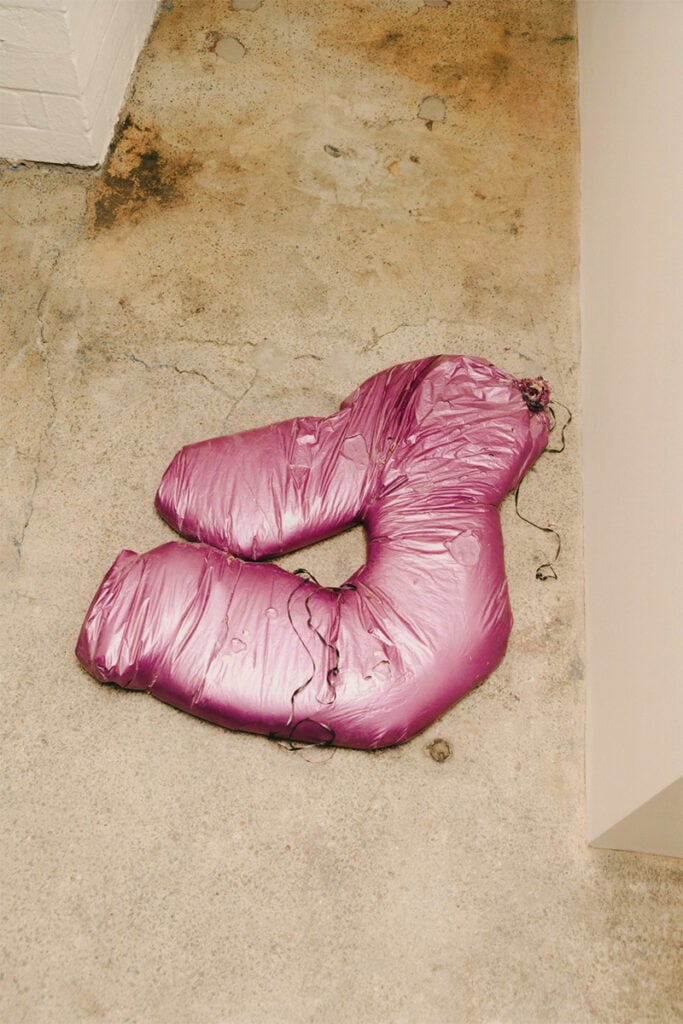
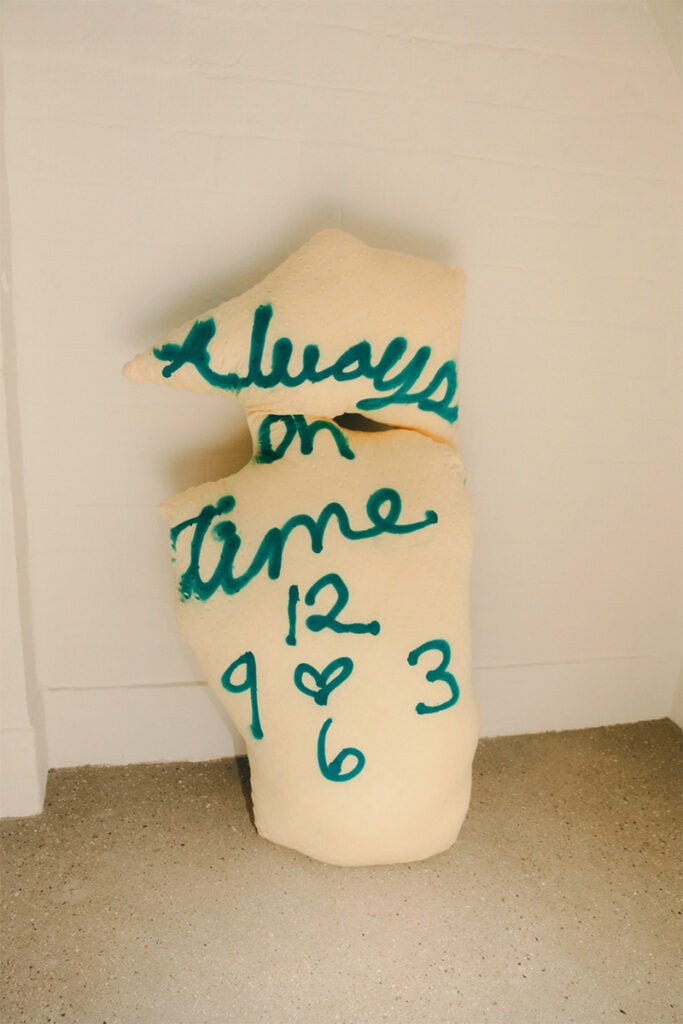
I remember first going through a piece of text with you—I believe it was Natasha Stagg’s profile of Coco Gordon Moore, Kim Gordon and Thurston Moore’s daughter. We were going through line-by-line, and the things you told me then I still apply to editing now. So I’ve always found it funny how you find writing painful, because I often have your advice in my head when I’m writing.
But only recently, you gave me the best advice with the Happy Victims introduction. You said that, because I’m a good editor, I should just write something and keep going, even if it feels bad, then go back and edit it with some distance. Honestly, now, there’s just so much noise. With image making, with found imagery, with words, with everything—I think a lot of brands could do with more editing and editors in their lives.
I do worry about the standard of language and how it’s slipping with the use of ChatGPT.
I know. I want personality in my emails!
You are a masterful composer of emails. I remember once, we had commissioned the great writer Tierney Finster, and soon after she tweeted this crack about British editors always putting a kiss at the end of their emails. I was like, you’re talking about us!
You’ve got to! But Americans really don’t. I hate emails that sound cold. I’ll message, like, a solicitor, and automatically put a kiss. Whoops.
We’re in your house in central London, within walking distance of Soho. It feels to me like it’s from an Adrian Lyne erotic thriller. The effect altogether is like being in a movie.
Honestly, it’s not intentional! I would be on Zoopla, and I would just search, ‘London’. This place came up, and it only had stock pictures. The guy who owned it had bought it in the late ‘90s and converted it; it used to be an old jewellery workshop. When I first moved in, the whole floor was painted blue. It was very early 2000s. So the renovation has been about stripping it back to what it was, like with the raw concrete floors. A lot of people think it would be really cold-feeling, but then they come and say, ‘Oh, it actually feels really warm’. It’s definitely minimalist, but there’s comfort too. It’s my dream home. All of these weird things came together for me to be here, and I do believe in signs from the universe.
I’ve always imagined you find this kind of minimalism to be calming. I feel like I gather too much stuff—I don’t have that restraint.
I’m sure this house will evolve over time. I love the objects and artworks I have now so much, like the Jonathan Lyndon Chase pillow in the bedroom and the Jessi Reaves ottoman in the living room. I also have this Rita Ackermann painting that she gave to my boyfriend. It has a figure in it that has this flaming red hair. It’s another connection.
One of the pleasures of working within the cultural space, I find, is the way you can actually assert not only your personality but your memories via objects in the home, as with prints or books by the photographers we’ve worked with. Or even your archive of the magazine itself. It’s part of our personal histories.
When we published the Pissing Women book at Climax, Sophy Rickett gave me one of the original Polaroids of the picture on the back of the book, where the girl is wiping herself and it’s shot from behind. Getting to live with these photographs—I still feel like, how cool is that?
Then again, one of the dangers is that one’s interests always get siphoned into the work arena. I’m curious what’s keeping you interested at the moment? What feels fresh?
I’m excited by physical spaces right now. We are really close to confirming a new London Climax store. Whenever I’m in New York, the interactions that we have with customers in the store make me so happy; it will be amazing for people here to have the same experience. It reminds me of my early shop floor days at Dover Street, in a way. I think we’ve made an environment where people feel at ease to be really curious. Of course, sometimes you can get in your head about these things, where you think, should I keep doing this? Opening the space in New York feels like it’s legitimised this thing that’s been stuck in my head for five years. This weird hobby has become a true expression of what I wanted it to be. There’s something so magical about it.
 close
close















